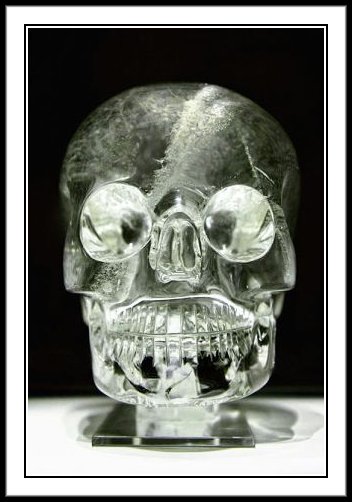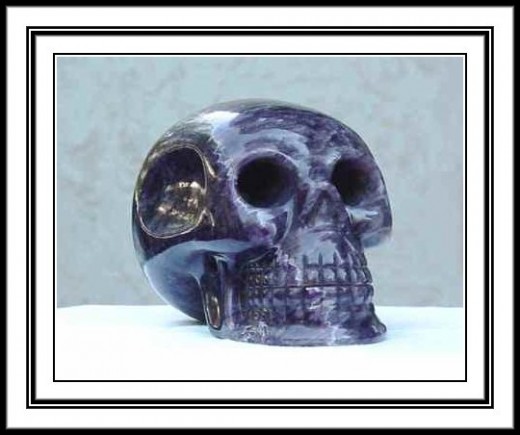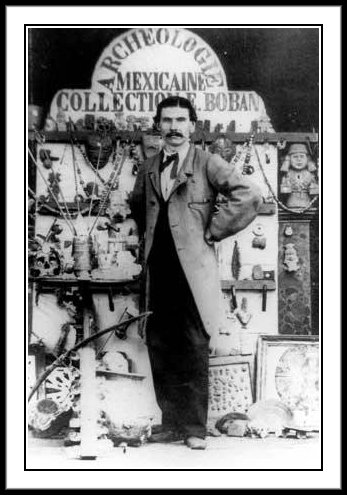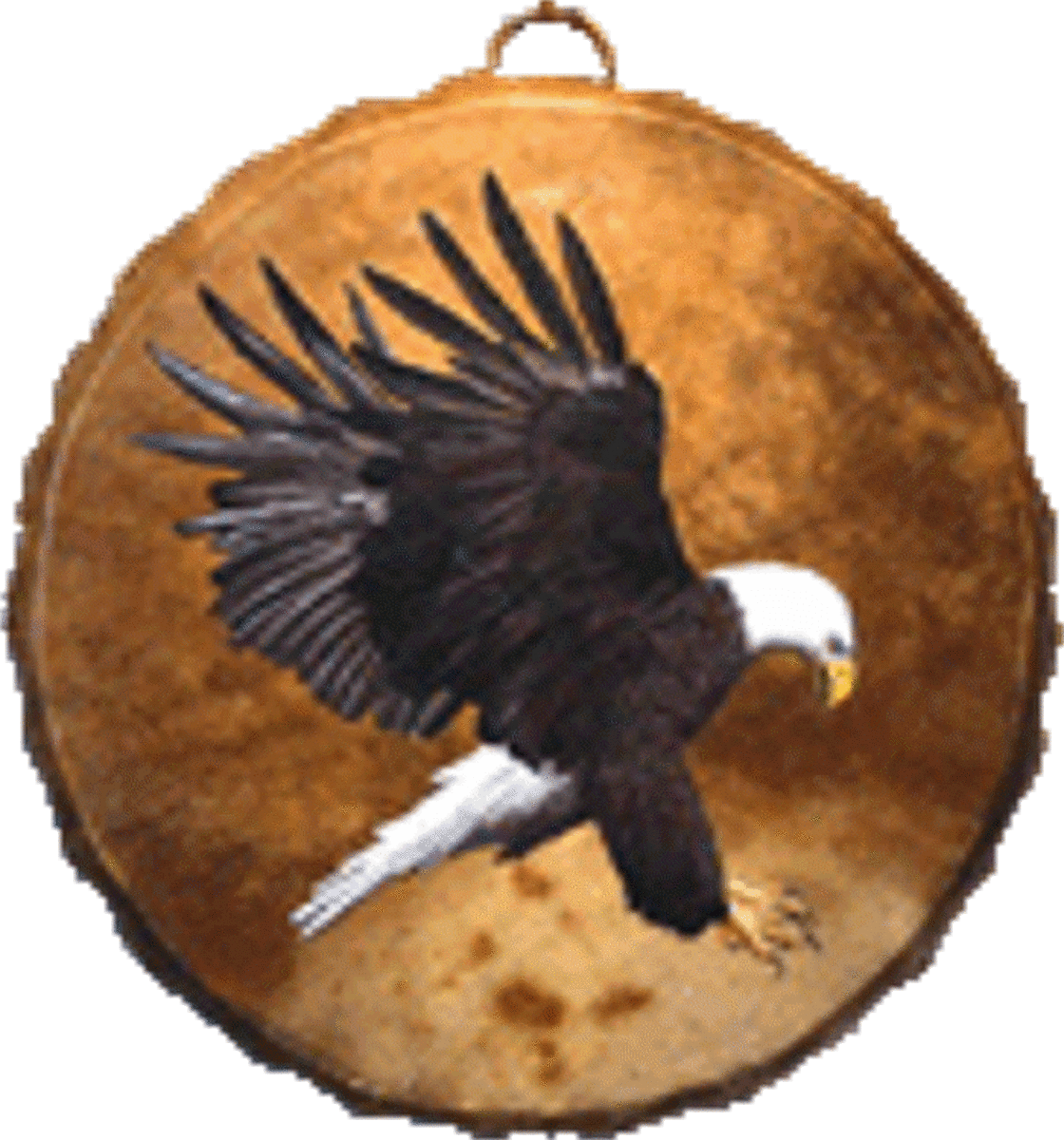The Crystal Skulls Mystery



Native American Legend
An ancient Native American legend tells of 13 crystal skulls, which are believed to hold secrets about man’s future and purpose. Several have been found. But, so many stories and outright fabrications have been propagated concerning the mysterious skulls it’s hard to tell fact from fiction. An attempt will be made here to dispel some of these fallacies.
Several "perfect" crystal Skulls were discovered in parts of Mexico, Central and South America. Early expeditions revealed locals thought they had magical powers and healing properties. But, where they came from, nobody knew.
Some like to believe they are remains from the lost civilization of Atlantis…others think they’re fakes. And some psychics believe they have prophetic capabilities. Historians and social anthropologists had to find out more about the skulls.
The Indian legend said they had been kept
separated from each other by pagan priests.
More skulls surfaced in museums and private collections around the world. However
there were more than 13 found. Very likely, a few were attempts to copy the
originals.



Mitchell-Hedges Skull
The most famous was probably the Mitchell-Hedges skull supposedly found on an expedition lead by famous English archeologist F. Albert Mitchell-Hedges in Central America in 1927. The skull was made from a block of clear quartz approximately the size of a small human cranium, with the lower jaw detached.
The original story was Anna Mitchell-Hedges, adopted daughter of the English adventurer found the skull. She steadfastly claimed until her death in 2007 to have discovered the skull, even though it’s doubtful she was ever on the expedition at all.
And for many years, while the skull was in her possession, she didn’t allow anyone to study it. She did however exhibit it on tours, and of course charged admission. It later came to light the story was entirely made up. F. Albert Mitchell-Hedges purchased the skull at an auction in London, in 1943.
After her father’s death, in the early 1960s, Anna finally decided to allow scientists to study it. Art critic Frank Dordland was the first to take a crack at it in the early 1970’s.Dorland claimed it had been "carved" with total disregard to the natural crystal axis without the use of metal tools. He described being unable to find any scratch marks, except for traces of mechanical grinding on the teeth.

HP Crystal Labs
The skull eventually came to the attention of Hewlett Packard’s (HP) crystal labs at Santa Clara. The labs determined only that it was not a composite as Dorland had proposed but fashioned from a single crystal of quartz. It was also determined the lower jaw had been fashioned from the same crystal. The traces of mechanical grinding on the teeth reported by Dorland, showed evidence of being made by metal drilling. Anna Mitchell-Hedges thereafter refused to allow the skull to be examined, thereby detracting from any credibility she might have had.
It was later noted by Smithsonian researchers to be "very nearly a replica of the British Museum skull, almost exactly the same shape, but with more detailed modeling of the eyes and teeth.”
In his biography F. A. Mitchell-Hedges mentions the skull only briefly without saying where or who found it. He only declared "it is at least 3,600 years old and according to legend it was used by the High Priest of the Maya when performing esoteric rites. " All later editions of his autobiography made no mention of the skull at all.
In April 2009, a UK television channel broadcast the story. It declared the Mitchell-Hedges Skull, which had been recently tested under a special microscope at the Smithsonian Institute, had been manufactured with tools Aztecs and Mayans simply couldn’t have had. However, like all other skulls found, this one’s origin dated from the second half of the 19th century.
Another skull, the crystal skull of the British Museum, was first seen in 1881, at the shop of Paris antiquarian, Eugene Boban. At the time his catalog didn’t state its origin. It was said he tried to sell it to Mexico's national museum as an Aztec artifact, but it was rejected. The British Museum skull is extremely similar to the Mitchell-Hedges skull. The only major differences between the two being it is less detailed and does not have a movable lower jaw.
The British Museum registers the skull as "probably European, 19th century AD" and not an authentic pre-Columbian artifact". It has been determined this skull was made with modern tools and not authentic.
The largest of the three skulls sold by Boban, sometimes called the Paris Skull, has a hole drilled vertically through its center. After a series of tests over a three month period, it was deemed "certainly not pre-Columbian, it shows traces of polishing and abrasion by modern tools." In 2009, researchers published further results. Evidence concluded it was carved in the 18th or 19th century.
Other skulls have been uncovered, such as the Mayan Crystal Skull and Amethyst Skull. They were discovered in the early 1900’s in Guatemala and Mexico. The Amethyst Skull is made of purple quartz and the Mayan skull is clear, but they are otherwise very similar. And like the Mitchell-Hedges skull, both were studied at HP and found to be cut against the axis of the crystal.
Some believers in the paranormal claim the crystal skulls have miraculous powers. For example, Ann Mitchell-Hedges claimed her skull could cause visions, cure cancer and the power to kill. In another instance, she asserted to foresee the JFK assassination.
Another unfounded speculation links the crystal skulls with the Maya December 21, 2012 doomsday scenario. Many other such ties have been proposed such as life on mars, antigravity claims and lost city of Atlantis.
However, claims of healing and mystical powers of crystal skulls are in no way supported in the scientific community. No evidence of anything unusual has been found, so as far as they’re concerned, there is no need for further study. That is except to discover their origin and how they were made.







